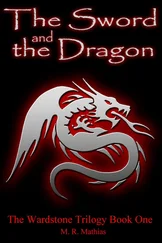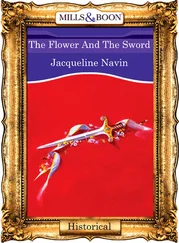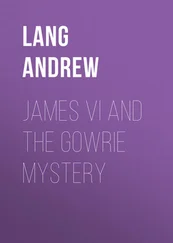The KGB’s domestic obsession with the detection and suppression of “ideological subversion” spilled over into its foreign operations. It sought to impress the Party leadership by its zeal in discrediting dissidents abroad as well as at home. In the summer of 1978 the KGB First Chief (Foreign Intelligence) and Fifth (Ideological Subversion) Directorates jointly arranged the secret screening in Moscow to an audience of KGB and Party notables of the commencement address by the dissident writer Aleksandr Solzhenitsyn at Harvard University. The purpose of this extraordinary (by Western standards) evening was to seek to demonstrate that, thanks to the efforts of the KGB, Solzhenitsyn was now a largely discredited figure in the United States. [29] 29 See below, pp. 418-19.
The KGB’s mission to discredit dissidents who had emigrated to the West extended even to dissident ballet dancers, musicians and chess players.
For Western media used to interpreting the secret Cold War in terms of spy versus spy, Mitrokhin’s material on the KGB’s war against ideological subversion, unlike the revelations about individual spies, had little interest. There was, predictably, greater interest in this material in the countries of the former Soviet Bloc — reflected, for example, in the number of translations of The Mitrokhin Archive into Eastern European languages. The priority given by the KGB to maintaining the ideological orthodoxy of the Soviet Bloc was reflected by the fact that it deployed more of its elite group of illegals to Czechoslovakia during the Prague Spring of 1968 than, so far as is known, were ever used in any operation against a Western target.
The Cold War chapters of The Mitrokhin Archive give equal weight to KGB operations against the United States and to those against ideological subversion. Mitrokhin smuggled out of the KGB foreign intelligence headquarters important material on operations against some of the leaders of the struggle for democracy within the Soviet Bloc whose extraordinary moral courage eventually prevailed over the immense coercive force of the KGB and its allies. Two examples stand out. The first is the great Russian dissident and nuclear scientist Andrei Sakharov, dubbed “Public Enemy Number One” by Yuri Andropov (successively KGB Chairman and Soviet leader), who survived persecution and internal exile by the KGB to become, in Gorbachev’s words, “unquestionably the most outstanding personality” at the 1989 Congress of People’s Soviets. One of the most striking visual images of the crumbling of the Soviet system, which deserves to be as well known as the destruction of the Berlin Wall, is of Gorbachev and other members of the Politburo standing bareheaded by Sakharov’s open coffin after his sudden death in December 1989.
The second outstanding case is that of Cardinal Karol Wojtyła, Archbishop of Kraków, whom the KGB seems to have identified in the early 1970s as its most dangerous opponent in the Soviet Bloc. Wojtyła, however, was protected by his moral authority and eminence. The KGB, like the Polish SB, shrank from the immense public outcry which his arrest would provoke. Seen in hindsight, Wojtyła’s election in 1978 as Pope John Paul II marked the beginning of the end of the Soviet Bloc. Though the Polish problem was, with difficulty, contained for the next decade, it could not be resolved.
The organization which has studied The Mitrokhin Archive with the closest attention since its publication is the SVR, which is deeply concerned by its contents. No intelligence agency can expect either to recruit new agents or to maintain the loyalty of its existing agents unless it can convince them that it can keep their secrets indefinitely. The SVR is now ill-placed to do so. Thanks to Mitrokhin, no one who spied for the Soviet Union at any period between the October Revolution and the eve of the Gorbachev era can now be confident that his or her secrets are still secure. Mitrokhin’s material also contains information on Cold War operations conducted by the current head of the SVR, Vyacheslav Trubnikov, and other former senior KGB officers. Volume Two will contain a chapter on KGB activities in India, where Trubnikov made his reputation. If the past secrets of the SVR leadership have proved insecure, SVR agents may well conclude that theirs are also.
From the moment the Mitrokhin archive arrived in Britain, SIS realized that its contents were “of exceptional counter-intelligence significance, not only illuminating past KGB activity against Western countries but also promising to nullify many of Russia’s current assets.” The CIA similarly found the archive “the biggest CI [counter-intelligence] bonanza of the post-war period.” The FBI agreed. As the ISC report reveals, other Western intelligence agencies have also been “extremely grateful” for the numerous CI leads provided by the Mitrokhin archive. [30] 30 Intelligence and Security Committee, The Mitrokhin Inquiry Report , p. 4.
Some insight into the turmoil inside the SVR which must have been provoked by the publication of The Mitrokhin Archive is provided by the file (noted by Mitrokhin) on the book on the KGB published by the American journalist John Barron a quarter of a century ago. KGB headquarters ordered no fewer than 370 reports in an attempt to assess the damage to its interests caused by various sections of Barron’s book. [31] 31 See below, p. 25.
Mitrokhin’s revelations have doubtless led to even more damage assessments than Barron’s. There is already unattributable evidence of efforts by the SVR to ensure that no archivist ever again has the unrestricted access to files enjoyed by Mitrokhin.
Like the KGB First Chief Directorate, the SVR contains an “active measures” section, Department MS, specializing in disinformation, which was inevitably instructed to try to undermine the credibility of The Mitrokhin Archive . [32] 32 The KGB had similarly sought to discredit Andrew and Gordievsky, KGB: The Inside Story , after its publication in 1990, by claiming that its best-publicized revelation — the identification of John Cairncross as the “Fifth Man” and the first agent to provide warning of plans to build the atomic bomb — was wrong. The SVR now acknowledges that the identification was correct on both counts.
On two occasions since the publication of the book, it has sent apparent Russian defectors to Western intelligence agencies, each with the same story about The Mitrokhin Archive . The SVR, claimed the “defectors,” had decided on a massive clear-out of redundant and retired agents which it had inherited from the KGB, and had therefore chosen a retired KGB archivist — Vasili Mitrokhin — to transmit their names to the West. [33] 33 In devising this ill-advised active measure, Department MS may have been encouraged by the fact that two somewhat similar suggestions had surfaced independently in the Western media. A writer in Le Monde had suggested that “…The Mitrokhin archive operation was organized in Moscow either by an undisciplined Stalinist faction in the KGB or by the provisional leadership of the [intelligence] agencies between November 1991 and February 1992.” (“Voyages en mémoire soviétique,” Le Monde , November 5, 1999.) In her review of The Mitrokhin Archive in The Times Literary Supplement (November 26, 1999), Dr. Amy Knight also could not “help but wonder whether [Mitrokhin] had a little help from his former employers in making known the KGB’s archival secrets.” “This,” she added, “is by no means a farfetched suggestion.” Dr. Knight’s earlier review of my book with Oleg Gordievsky, KGB: The Inside Story , had included the eccentric suggestion that I might not have written the lengthy introduction ( TLS , December 7, 1990). My own review of Dr. Knight’s book, Spies Without Cloaks , makes clear my respect for her research on Russian intelligence. There is, however, occasionally a mild element of conspiracy theory in her work — as evidenced, for example, by her suggestion in Spies Without Cloaks that Gorbachev was complicit in the attempted coup against him in August 1991.
This poorly conceived active measure proved counter-productive for two reasons. First, a series of Western intelligence agencies had already been able to establish that Mitrokhin’s material was far too valuable to them for the SVR to have willingly made it available. Secondly, both the bogus “defectors” were quickly and conclusively exposed as SVR plants. The whole episode has merely served to underline the SVR’s deep anxiety at the damage to its agent operations caused by Mitrokhin’s material. Its mood will not have been lightened by the knowledge that there are many more revelations still to come in Volume Two. Mitrokhin’s ambition — unchanged for almost thirty years — remains to publish as much as possible of the top-secret material which he risked his life to collect.
Читать дальше











